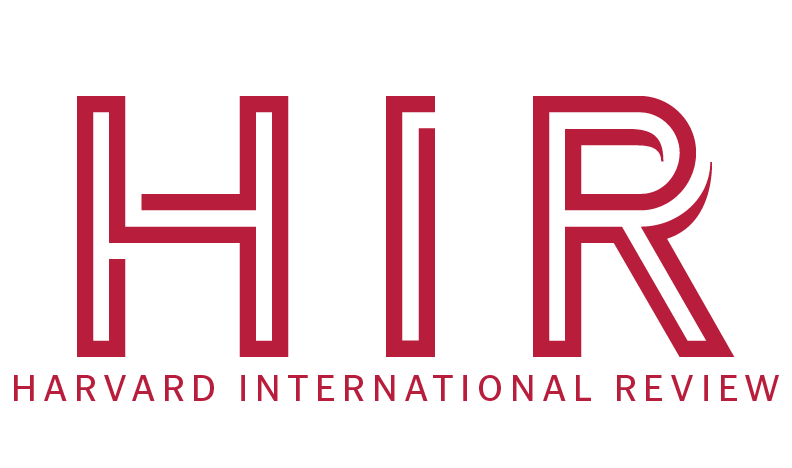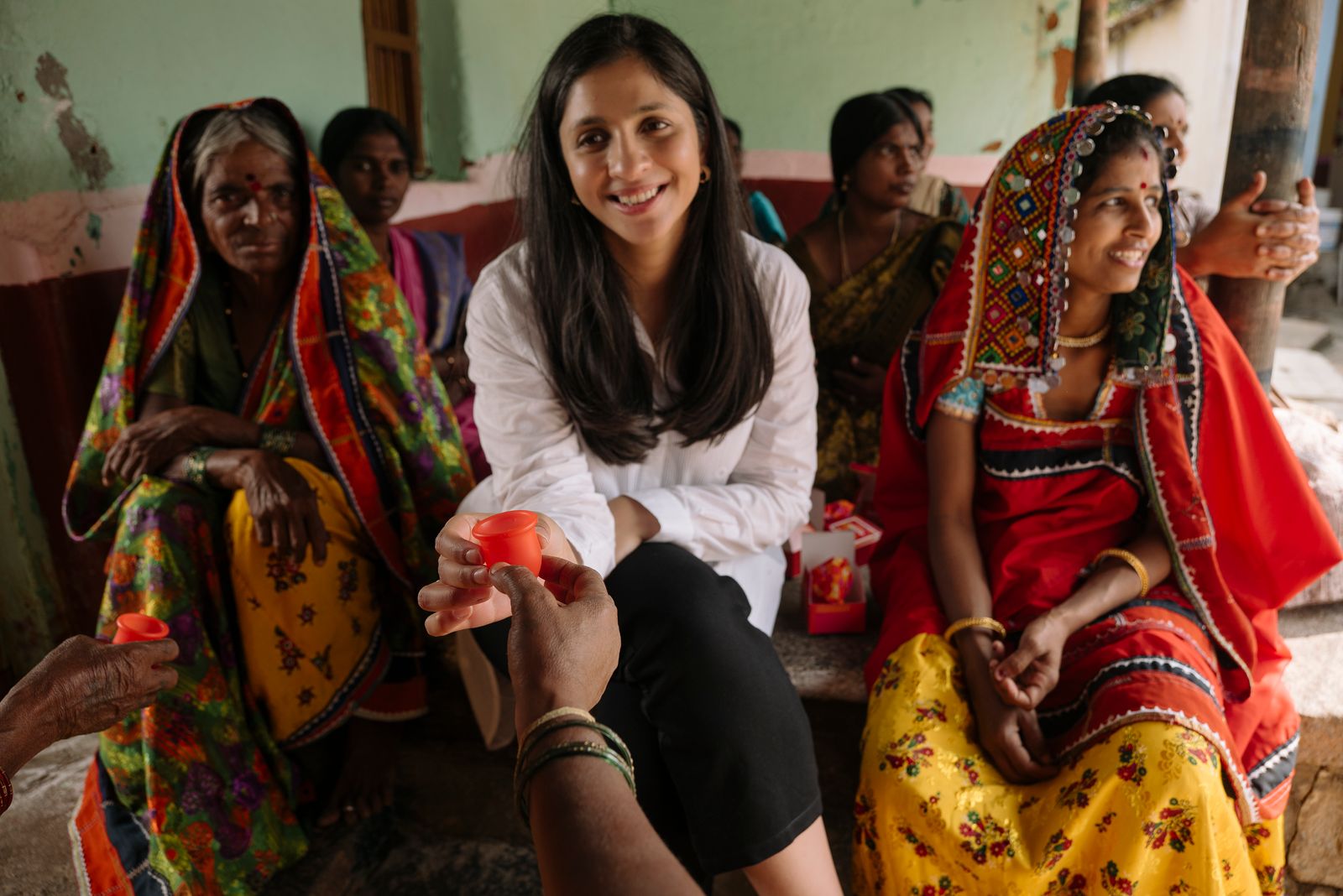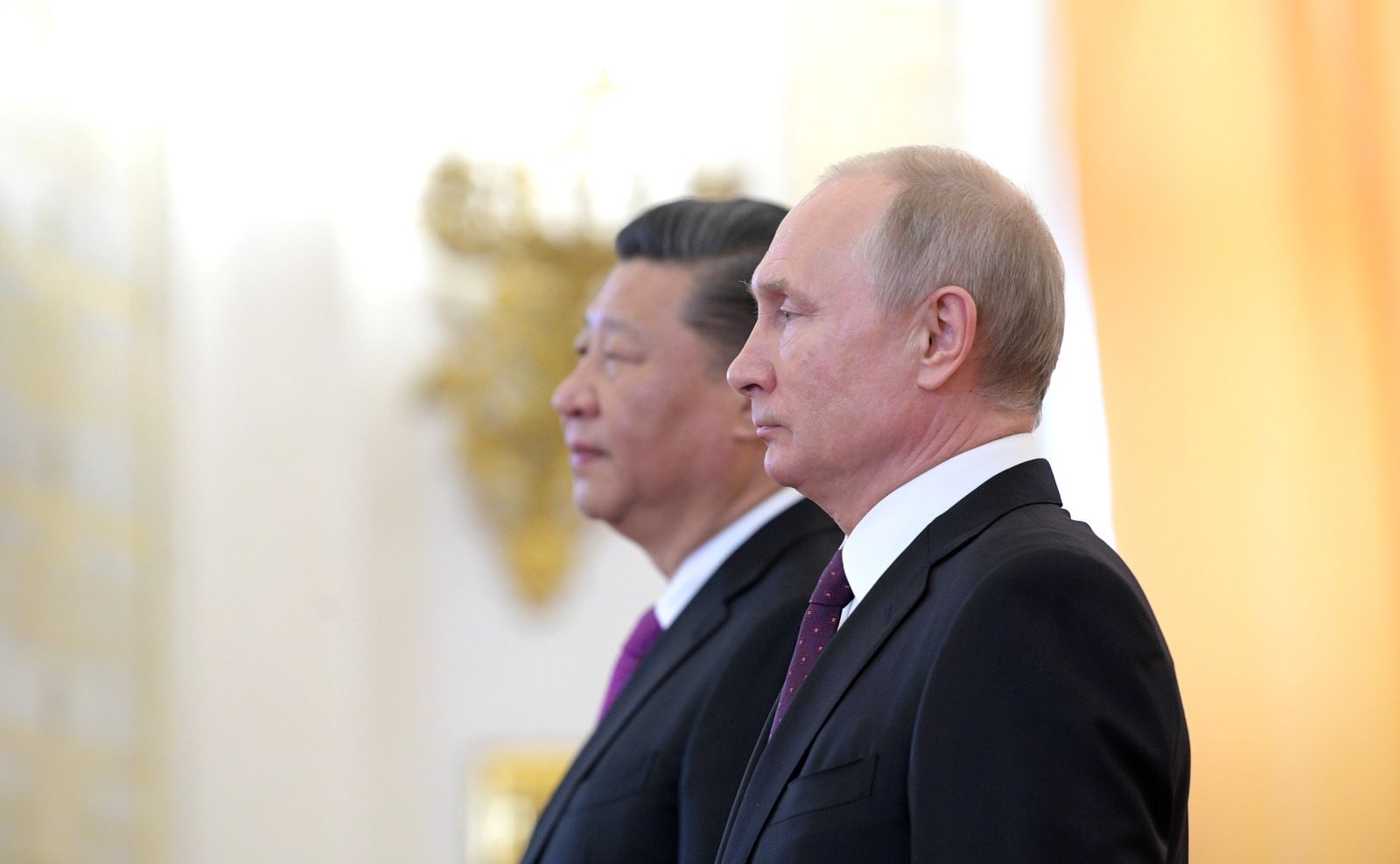Period poverty is one of the biggest problems endured by women in India today, with 23 million girls dropping out of school annually due to lack of access to menstruation facilities. What led you to choose a menstrual cup as the optimal solution to the problems faced by women in India?
There are two parts to this answer. The first is personal, based on my own experience with period care.
I grew up in South India and played competitive basketball for Karnataka state. We often traveled across the country for tournaments and stayed in places with very poor sanitary conditions. Our team had to carry soiled pads in our bags for days because there were no dustbins in the stadiums or hostels. Because of this, I became an early adopter of menstrual cups. That experience showed me how unsuitable pads are for many parts of rural India.
On a broader level, I got into this work around 2015. At the time, the Bollywood movie Padman came out, which reflected a national push toward disposable plastic sanitary pads—from the government, non-profits, and the private sector. But through my own experience and conversations with women in Karnataka, I realized these pads were a poor solution. Many women started throwing them away and switching back to cloth rags.
There were two main reasons. First, the pads caused severe rashes and infections, especially in heat-prone areas. The adhesive would melt in high temperatures, making them uncomfortable and even harmful. Second, there was no proper disposal mechanism. Like I mentioned earlier, most women do not have access to a dustbin connected to a waste system. They often have to collect used pads and burn them, which releases toxic fumes.
Understanding all this, I knew the solution had to be non-disposable. As a menstrual cup user, I had seen the benefits firsthand. I started handing out cups to women in my community. The response was amazing: my mom’s cook asked for more cups for her niece, and then daughter. It began to spread organically, which eventually led me to design my own menstrual cup.
A menstrual cup is made from Class VI silicone, which is a medical-grade material also used in heart stents and breast implants. It is designed to be worn inside the body and is incredibly durable. One cup can be used for up to ten years. You simply remove it, wash it, and reinsert it.
It is safe, affordable, and sustainable. In fact, medical studies have also shown a significant reduction in bacterial vaginosis when users switch from pads to cups. Regardless of income level or country, the menstrual cup is actually one of the healthiest period care solutions available.
In a culture where menstruation and women’s health is often a taboo, how have you dealt with stigma surrounding period products – as an entrepreneur, and a leader?
The best way to overcome a taboo is through trusted networks. In fact, 100 percent of Asan’s marketing is word of mouth; through someone who looks like you, speaks your language, and whom you trust.
I’ve learned that rather having having a Bollywood actor promote a product, it is far more powerful for the recommendation to come from your sister-in-law, neighbor, or local health worker. That is why Asan’s model works with existing rural nonprofits to identify ambassadors who use the cup themselves and then promote it within their own communities. These ambassadors are trusted sources, and that is how we overcome the taboo.
Another important point about the innovation behind menstrual cups is how well it fits into a taboo-driven society, because it is so discreet. With cloth rags, women often scrub them for hours and hang them outside to dry, making it obvious to everyone that they are menstruating. With pads, you may need to ask a family member for money to buy them. They are bulky, take up space, and need to be collected and burned. Once again, this makes your period very public. With Asan, there is nothing to burn, dispose of, or wash. That leaves the choice and autonomy up to individual women. It is incredibly empowering.
Asan has worked with over 15,000 women in 60 villages in Karnataka, deploying a comprehensive six‑month behavioural change model where local health workers train and follow‑up with users from within their own communities. Can you speak to the key strategies and trust‑building approaches that made this successful?
Since a menstrual cup is an insertable product, unlike a pad that you simply strap on, there is a learning curve involved. To support this transition, we have developed a six-month behavioral change program. It combines smart communication strategies with built-in feedback and follow-up loops.
The first step is selecting local ambassadors, typically health workers or NGO staff, who become the early adopters of the product. They try it themselves first before they can help advocate for the product. Then, we conduct a detailed "train-the-trainer" session that equips the ambassadors with comprehensive menstrual health knowledge and the tools they need to promote Asan effectively in their communities.
Next comes what we call “Community Connect.” Before the product is even distributed, ambassadors begin casually talking about their own experiences with it during community sessions or workshops. In a word-of-mouth style, they might say things like, “I no longer have to scrub cloth rags,” or “I don’t have leaks anymore,” or “I can now travel from one village to another during my period.” This creates curiosity and buzz, so when the product finally arrives, people have already heard about it and are eager to try it.
Then comes the education and distribution phase. Everyone who receives an Asan cup attends a one-hour workshop, where they learn about menstrual health and get detailed instructions on how to insert, remove, and clean the cup. This ensures they are fully informed.
Finally, we also conduct in-person feedback and follow-up sessions. These are crucial. Typically, at the first follow-up, about two months in, only around 30% of women have tried the cup, while others are still hesitant. But when those who have used it share how life-changing it has been, it creates a network domino effect. Hearing firsthand from their peers motivates the rest to try it. By the end of six months, we usually see over 90 percent adoption.
Sustainability is an important priority for Asan. Asan has been credited with averting over 100,000 tons of plastic waste and enabling an average of 260 extra productive days per woman. How do you balance scaling impact with environmental metrics?
Absolutely, there are many environmental metrics we track. The beauty of our solution is that sustainability is built into it. As more people adopt Asan cups, fewer disposable sanitary products are used. To measure this, we conduct baseline and follow-up studies. First, we determine how many pads a community was using before, and then we gather data after they switch to the Asan cup to understand whether they are still using any disposable products. This gives us a very granular view of the impact.
Another key metric we track is household savings. Families that were previously spending monthly on pads are now able to save that expense. So far, we have saved rural households approximately US$27 million. Another important metric is landfill waste averted. Since many pads are either burned or sent to landfills, switching to reusable cups has helped us prevent over 300 tons of waste from being generated.
We also track the reduction in carbon emissions. It is important to understand that with disposable pads, the environmental impact goes far beyond just their disposal. A pad used for just four hours still has to be manufactured, packaged, shipped, possibly flown, and then trucked to a grocery store. After use, it enters the waste management system, often picked apart by waste workers before ending up in a landfill. This entire supply chain has a heavy carbon footprint. By eliminating the repetitive need for that process, we achieve significant carbon savings.
A significant portion of the engineering for the Asan period cup occurred in Harvard’s Innovation Lab. What was the research and development phase like? What were important considerations and feedback loops you considered in the process?
We went through a four-stage user testing process during our R&D, and it was entirely driven by user feedback. We worked with a group of around 30 women across the US, UK, and India, including 10 women from rural Karnataka. We wanted to gather feedback from a diverse range of users.
The first step involved examining the best commercially available menstrual cups on the market. We asked our pilot group to test these and give us detailed feedback. The most common complaint, which I also experienced personally, was that the cups were difficult to remove. Most had stems that were uncomfortable, hard to grip, or poked users. To address that, we designed the Asan cup with a ring instead of a stem, making it much easier to locate, grip, and remove.
The second issue was discoloration. Many women found that their cups turned brownish after just two or three menstrual cycles, which made them feel like they had to throw them away. So we not only improved the material but also made the cup bright red, which prevents discoloration and keeps the cup looking new even after ten years of use.
Another significant barrier we addressed was sizing. The terminology used by other brands, like "vaginal birth" or "cervix height," was confusing and inaccessible. These are not terms that are easily understood by the general public. So we reimagined sizing in a much more intuitive way: light flow, medium flow, and heavy flow. Everyone understands this kind of language from using pads or tampons. Even for cloth users, we made it relatable: if you change your cloth every six hours, use a light flow cup; if you’re changing it every two to four hours, go with a heavy flow cup. This approach made it far more accessible.
Once we had these ideas, I partnered with a designer and an engineer from a design school. We created an initial model and printed it in resin at the Innovation Lab. Later, we produced a silicone version, which we distributed to our testers. We gathered detailed feedback over and over again, refining the design through four iterations over about 18 months. By the end, we had developed what we believe is a foolproof menstrual cup; one that truly meets the needs of users.
Moving forward, your goal is to reach 1 million low-income women globally in the next 5 years. What are the biggest challenges you see—cultural, logistical, financial—in scaling Asan internationally, and how do you plan to tackle them?
At Asan, we operate a cross-subsidy model. We sell the Asan cup at full price to women who can afford it, and at cost price to institutions across the Global South that employ or serve low-income women. These institutions include nonprofits, factories with female workers, hospital groups, and even military organizations.
We have created a comprehensive package for these local partners, which includes user guides and educational content in local languages. This enables them to run their own menstrual health programs, making it a lean and efficient way for us to expand into new regions. For example, we have a fantastic partner NGO in Malawi that has distributed Asan cups to more than 6,000 women. We also work with a nonprofit in Zanzibar that serves women in the military and athletes, reaching over 3,000 women. All of this is done through trusted local organizations.
The biggest challenge we face with Asan’s model is our commitment to reaching women at the bottom of the pyramid; those who have no access to period care at all. Most other period care brands target high or middle-income segments. But we are focused on reaching women in remote villages who often have zero ability to pay, even at a heavily subsidized price.
That is why we have had to develop innovative payer strategies. In some cases, we can demonstrate to a woman’s employer that providing menstrual products improves her productivity at work, and the employer agrees to sponsor the product. But many women are outside the sphere of formal employment, and reaching them is even more difficult. In such cases, we often rely on philanthropic funding.
As a bold founder who has had to take risks to successfully run a social start-up in an emerging market, what advice would you share with our readers who aspire to create scalable social impact in uncertain circumstances?
Be problem-obsessed rather than solution-obsessed. Founders often come up with a cool solution or piece of technology and then try to fit it into a market that doesn’t necessarily have the problem they are solving. That is where product-market fit is often lost.
In women’s health, unfortunately, many innovations are still targeted at the top 1%. If you’re working in emerging markets, you have to ground yourself in the realities people face. If your target users do not have access to smartphones or even basic period products, then designing a deep-tech, AI-based PCOS diagnosis app is meaningless. It requires a level of digital access and literacy that just is not available.
So focus deeply on the problem. Be obsessed with your customer. Stay as close to them as possible. That, I believe, is the real recipe for success.
Ira Guha (HKS ‘19) is the founder and CEO of Asan, a social enterprise dedicated to ending period poverty, serving 100,000+ products to more than 12 countries globally. In 2024, Guha was awarded the Cartier Women’s Initiative Fellowship for her work towards gender equality, sustainability, and health access. Guha spoke with Sheth on June 17, 2025. This interview has been lightly edited for length and clarity.
The views expressed in this piece are the interviewee’s own and are not reflective of the views of the HIR.




